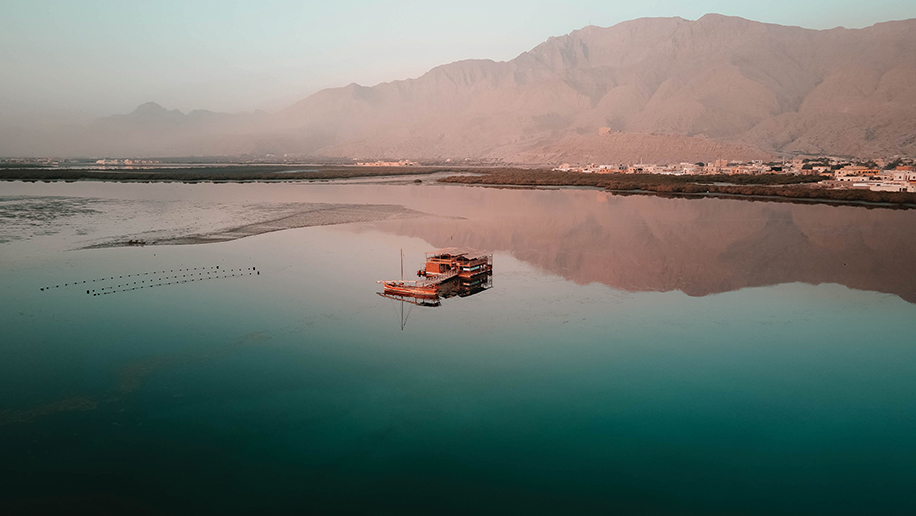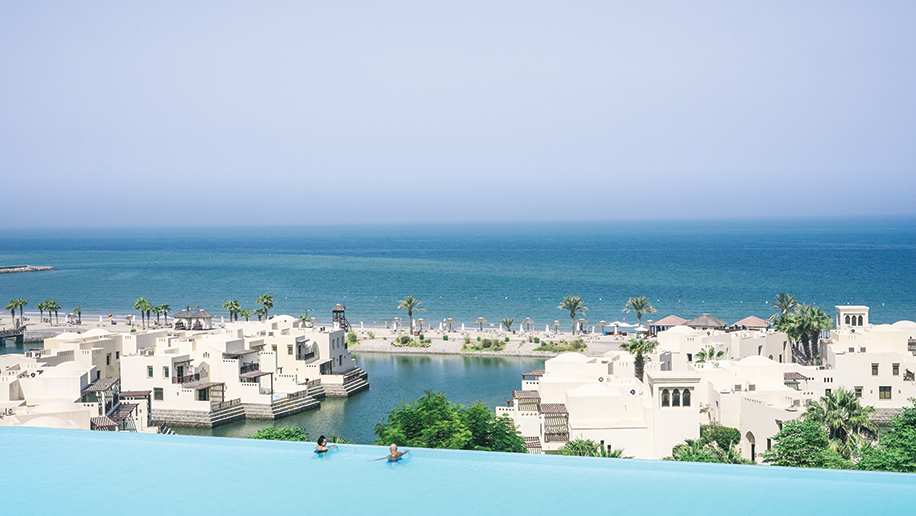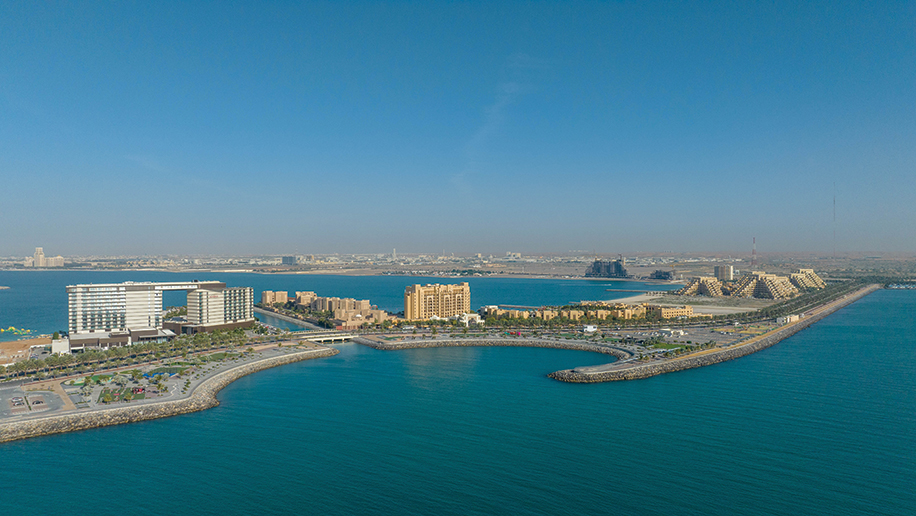
Roughly a decade ago, the northernmost emirate of UAE – Ras Al Khaimah – embarked on a steep path to build its tourism sector. The Ras Al Khaimah Tourism Development Authority (RAKTDA) was established in 2011, and gradually the emirate began streamlining its tourism operations. It recognised the fact that it enjoyed a terrain and weather, especially in the high-altitude areas of the emirate, that differed from other regions in the UAE and thereby opened the destination to year-round visitations. It was one that could attract domestic and international tourists who were seeking a share of the adventure travel market.
Its tourism strategy has paid off handsomely. Last year, Ras Al Khaimah recorded its highest-ever annual visitor numbers, with over 1.13 million overnight arrivals, an increase of 15.6 per cent over 2021. At the helm of RAKTDA, driving that growth, is its chief executive officer Raki Phillips. “The results exceeded pre-pandemic levels, indicating recovery and resilience in a volatile year. In addition to these record visitor numbers, [we also had a] 40 per cent increase in international visitors versus 2021. We have recently announced a series of strategic partnerships with airlines and leading tour operators to target emerging and growing source markets including India, Central and Eastern Europe,” says Phillips. Last year, key international source markets for the emirate included Kazakhstan, Russia, the UK, Germany and the Czech Republic.

One of the first steps towards getting those international tourists in was to fly them directly into the emirate. As Phillips explains, “Seventy-five per cent of passengers that land in Ras Al Khaimah airport end up vacationing in RAK. So, for us, it’s very important to be able to drive the partnership of direct flights into RAK airport. However, we’re also 45 minutes outside of Dubai International airport, and 35 minutes outside of Sharjah.”
But apart from air connectivity, the emirate has found itself developing its cruise tourism division too given that it has a coastline and the potential to attract high-spending cruise ship tourists. A few years ago, RAKTDA and RAK Ports worked on transforming the old ferry terminal into a state-of-the-art cruise terminal. The 1,000 sqm terminal can handle a disembarkation rate of 400 passengers an hour and can dock several cruise ships up to 214 metres in length. In 2022, Ras Al Khaimah received three luxury cruises with over 2,500 passengers and crew. RAK now aims to attract 50 cruise ship calls each season, and quadruple last year’s figures to host 10,000 passengers within the next few years.
How BM Hotels and Resorts shaped Ras Al Khaimah’s modern hospitality industry
One of the pillars of RAK’s growth has been that of its hospitality sector. Last year, a raft of new hotels and resorts opened in the emirate raising its inventory by 17 per cent to reach more than 8,000 keys. Major international players such as Intercontinental Hotels Group, Radisson and Mövenpick made their debut in Ras Al Khaimah with properties including InterContinental Mina Al Arab, Radisson Resort Ras Al Khaimah Marjan Island and Mövenpick Resort Al Marjan Island. There’s plenty more to come. RAKTDA has indicated there are 19 properties that will open in the emirate over the coming years. These will be from brands such as Marriott, Millennium, Anantara and Sofitel, among others, who collectively account for an additional 5,867 keys in the pipeline, and will result in a 70 per cent increase versus current inventory. In January, Nobu Hospitality announced that it too would make its way to the emirate and open a beachfront luxury hotel, 300 branded residences and its signature restaurant on Marjan Island across a 70,000 sqm project.

However, one of the biggest and most eagerly anticipated projects under construction in Ras Al Khaimah is the mega Wynn Resorts which is expected to open in 2026. “The partnership between Wynn Resorts, Marjan and RAK Hospitality Holding to open a multi-billion-dollar integrated resort development on Al Marjan Island, is set to attract a new segment of travellers to the emirate,” he says. It will feature over 1,000 rooms, a shopping arcade, meeting and convention facilities, over 10 restaurants and a gaming area too. “Wynn is not only an operator of the integrated resort, but they’re also an investor which really shows the resilience of the destination and the interest that there is to invest in the destination,” notes Phillips of the project which marks the single biggest foreign direct investment into the emirate.
Apart from foreign investments, locally, back in 2021 RAKTDA said that it would invest Dhs500 million to build 20 sustainable tourism developments in partnership with RAK Hospitality Holding and the RAK Chamber of Commerce and Industry. “We have launched several new attractions and experiences over the past year. These include the launch of our toboggan ride on Jebel Jais – the Jais Sledder, which has seen more than 127,000 visitors since its opening, as well as the development of the longest network of hiking trails in the UAE. We have a line-up of upcoming enhancements on Jebel Jais including attractions like the Jais Wings and Jais Mini Golf. We will also be diversifying our accommodation offerings with new sustainable accommodation and glamping concepts, including Earth Altitude, an eco-based pop-up hotel concept, Saij, a Mantis Collection Mountain Lodge that will provide a mountain retreat experience, and Cloud7 Camp Jebel Jais which will assure the ultimate sustainable glamping experience,” says Phillips of the progress of those projects which are backed by that investment.
While adventure, glamping and ecotourism will continue to be a major attraction for visitors to Ras Al Khaimah, MICE tourism will also be a growing focus for the emirate. To support business travellers and MICE groups, last year, RAK introduced a series of measures including flexible rates at the 2,700 sqm Al Hamra International Exhibition and Conference Centre facility, an incentive programme (rebate on accommodation rates), a waiver of permit fees and reduced delegate rates for many of the emirate’s attractions. “Ras Al Khaimah has strengthened its MICE offering through a robust programme of familiarisation trips, participation in exhibitions and roadshows and hosting workshops in key tourism markets – we participated in over 250 events and roadshows in 24 markets worldwide last year. Ras Al Khaimah secured several strategic event partnerships in 2022 too. We are also working to ensure Ras Al Khaimah offers a wide portfolio of world-class hotels to dedicated MICE venues to Al Hamra International Exhibition and Conference Centre – the UAE’s only purpose-built MICE venue located directly on the beach, and outdoor event venues in Jebel Jais,” notes Phillips. “We also work very closely with the Ras Al Khaimah Economic Zone (RAKEZ) when it comes to tourism startups. RAKEZ launched an unbelievable [co-working] hub called Compass which is a great place for startups to come and get their licence and work out off.”
Ras Al Khaimah’s tourism goals are deliberately measured – three million annual visitors by 2030. The underlying motive of that is, as Phillips explains, to ensure that there is no “over-tourism” in the emirate which feeds back into its sustainable tourism goals. “Nature and our wide-open spaces are the calling card of our destination. In order to protect our unique natural environment and local communities, we are committed to ensuring that there is no over-tourism in Ras Al Khaimah. We are also investing in cultural conservation, with four tentative UNESCO World Heritage Sites and Suwaidi Pearls, the only traditional pearl farm in the UAE.” The emirate is also looking internationally when it comes to formulating and meeting its sustainability goals. RAKTDA partnered with Australian company EarthCheck which undertakes sustainability certifications. “We looked at specific places such as Panama which is a carbon-negative country and asked ourselves how do they do it? We looked at countries like Costa Rica, Iceland and Slovenia which do a very good job [in sustainability]. All of those are great examples for us to learn from and benchmark ourselves.”

Elsewhere, new frontiers to grow its tourism will be that of inclusive travel and sports tourism, observes Phillips. “People with disability and special needs spend approximately US$8 billion on tourism services annually, and the World Health Organization estimate the number of people with disabilities will double to two billion by 2050. At Ras Al Khaimah, we have engaged with accessibility experts to map out the consumer journey from the eyes of the traveller with a determined spirit.” As for sports tourism, one of the immediate benefits will be growing the visibility of the destination in international markets. “In 2022, global sports events held in Ras Al Khaimah were televised in more than 180 countries. As one of the fastest-growing segments in the industry, sports tourism also provides sustainable economic growth in every respect from job creation to new income opportunities. The benefits of a thriving sports tourism infrastructure can also be enjoyed by the local community,” says Phillips of the emirate whose roster of sports events include the Ras Al Khaimah Half Marathon, the DP World Tour – RAK Championship, Highlander, Gumball 3000 and 1000 Miglia and even the region’s first Minifootball World Cup which will be held later this year.
Overall, Phillips says that RAKTDA is also enhancing the livability of the emirate for its permanent residents who are playing a vital role in the emirate’s tourism strategy. “Our goal with regards to visitor arrivals is one thing, but building the livability of the destination is also very important to us and tourism is the main contributing factor to the success of livability in the emirate,” says Phillips. It’s a win-win scenario for all the stakeholders.












